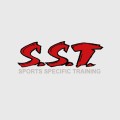Stretching for Athletic Performance: The Upper Body
This series on how to incorporate static stretching to improve athletic performance was begun a couple of months ago. The reasons behind this series are simply that, over the last few years, static stretching has gotten a bad rap in strength and conditioning circles and to show how we can use static stretching to enhance performance rather than detract from it. The first two parts of this series looked at the basic guidelines of a static stretching routine and stretches for the lower body. In this final installment, we will cover static stretching for the upper body.
Just to recap, the purpose of static stretching is not to warm-up for athletic activity; it is to lengthen those muscles that were shown to be overly short at the conclusion of our initial assessment at SST. It is important to note that we do not incorporate a shotgun approach and static stretch every single muscle group. Depending on the areas of tightness of the individual, stretches for only a single muscle group might be prescribed.
With our recap complete, let’s get into the common trends and then the actual stretches!
Common Trends:
- Tight pectoralis major
- Tight latissimus dorsi
- Tight upper traps/levator scapulae
Tight Pec Major
The pectoralis major muscle has two main functions: to horizontally adduct the arm and to internally rotate the humerus, so in order to stretch it we need to both horizontally abduct the arm and externally rotate it. The most commonly used stretch involves placing your outstretched arm on a doorway and then rotating your chest away from your arm. The main problem here is that not all the muscle fibers are oriented at the same angle, so by just placing your arm at one position (shoulder height, for example) you only get a good stretch in those fibers that run with the same orientation as your arm (in this case, straight across the muscle belly which are in the mid to upper portion of the pectoralis major muscle). To stretch all the fibers, you will need to perform this stretch with your hand above shoulder height (think 45 degrees), at shoulder height, and below shoulder height (again, think 45 degrees). Hold each position for 10-15 seconds.
SST has been very fortunate to have trained thousands of hockey athletes throughout their 8 locations in Canada. We, at SST, wish everyone a great summer and remind you to concentrate on your off –ice training. Please check out our website www.sst.training for more info about SST’s High Performance Summer Camp!
Learn how to become faster by dragging a sled, tire flipping, fire hose dragging, car dragging and much more!
Our locations include:
Burlington http://sst.training/burlington.php
Hamilton ; http://sst.training/hamilton.php
Laval ; http://sst.training/laval.php
Milton ; http://sst.training/milton.php
Mississauga; http://sst.training/mississauga.php
Oakville ; http://oakville.sst.training/
Richmond Hill; http://sst.training/richmondhill.php
Waterloo; http://sst.training/waterloo.php


